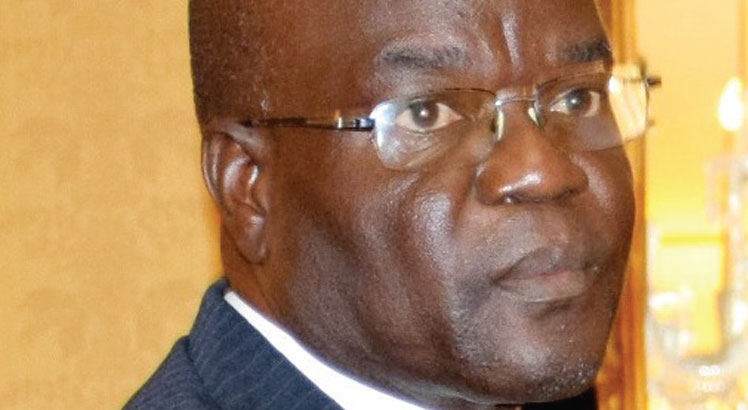Death-trap: Case of transporting immigrants
Cracking down on illegal immigrants is almost impossible as it is shrouded in secrecy, offers fat cheques and involves some top security officers in the country. This is what our sister paper Weekend Nation established yesterday while Nation on Sunday digs deeper on how local communities facilitate movement of illegal immigrants and how they have been dying on their ill-fated trips:
Death-ridden trip
While the 30-dead bodies of illegal immigrants found in a mass grave in Mtangatanga Forest in Mzimba District last October have alarmed everybody, informants say deaths of immigrants in transit is a common experience as they are buried and forgotten, and the Mzimba case was just “another bad job at the office”.
In fact, this is not the first time Ethiopians have been found dead in large numbers in Malawi. In 2012, 47 bodies were found floating on Lake Malawi in Karonga after a boat they were sailing in capsized.
“Villagers around the lake found a body on Monday and buried it. On Tuesday another corpse was floating on the lake and the villagers also buried it. On Wednesday, several bodies were seen floating on Lake Malawi and the police became involved and picked them up. The bodies were decomposed and were buried immediately,” reads a report from the United Nations High Commission for Refugees (UNHCR) in 2012.

In 2011, 12 Ethiopian illegal immigrants who were trying to cross into the country through Lake Malawi were found dead at Sanga in Nkhata Bay. Police at the time said they died of starvation. During this incident, 94 illegal immigrants were intercepted at Sanga.
“The bodies were randomly dumped in the lake as the immigrants did not die at the same time,” said Nkhata Bay Police spokesperson at the time Martin Bwanali.
He said the illegal immigrants used Tukombo as a transit point, taking advantage of the closeness of the lake to the hills, which allows them to “quickly get into the bushy hills after docking”.
We visited this place in Nkhata Bay District, where the lake is just about 50 metres from the bushy hill, with the M5 separating the two physical features. The broker said the bushy hill is used as both a resting place as illegal immigrants wait for loading and a route to evade law-enforcing agencies.
“Personally, I have dumped some illegal immigrants along the way in the bush. I cannot count how many but it is quite a number that have died and been dumped. You are talking of a group of more than 100 people sometimes, you cannot deliver all. For them, it is a game of life-and-death,” said the Nkhata Bay broker.
We got similar information from the Karonga District-based broker, who said some illegal immigrants die from ailments while “others are killed when they are seriously ill and cannot move on their own, and to avoid wasting time, they are finished off”.
In extreme cases, the broker said, some are killed when they pose a threat to the business.
The IOM report, based on interviews with intercepted Ethiopian immigrants, showed that deaths were a common occurrence in the southern route as the movement was characterised by starvation and torture.
IOM indicates that 51 000 Ethiopian migrants
have gone missing since 2016. The Bureau of Labour and Social Affairs in Southern Ethiopia shows that 4 265 deaths and 1 707 disappearances of migrants from the southern districts of Hadiya and Kembata Tembaro were recorded along the southern route to South Africa between 2012 and 2019.
Communities aiding criminality
Some communities in Karonga and Nkhata Bay are familiar with this illegal business, which looks normal to them. In Karonga, we visited villages such as Nyasa and Timoti, which lie along the Songwe River, but connected to the M1.
Without revealing our identity, we interacted with several members of the community who know about this business and talk about it openly just like many do at Karonga Boma and Tukombo in Nkhata Bay.
Around Songwe, we visited a home where Ethiopians are usually picked from to start off on the journey to Lilongwe. We located this place with the help of the broker and some of the suspects in the Mzimba mass grave case.
This transit point has two houses surrounded by thick mango trees. Quite a spacious compound with a passable road which can accommodate a 10-tonne truck, and is linked to the Songwe River.
We were informed the illegal immigrants are usually picked at night and the owner of the compound and some men who help them cross the river or provide directions in terms of routes get something.
The home owner confirmed that if we had any from Tanzania or Malawi we wanted to keep at the house, we were free to do so. At the time of our visit, the house was full of bags of maize which was being smuggled to Tanzania.
Men carry the maize on bicycles and ox-carts to the Songwe River, just about 500 metres away, to be taken to Tanzania. We were informed that this is the same route illegal immigrants use.
Informants showed us routes that the immigrants usually use from Karonga to Lilongwe, or Nkhata Bay to Lilongwe to avoid some roadblocks. The routes include footpaths in bushy areas, covering long distances before they get back on the road.
Strategically, just like the hiding
site at Mtangatanga Forest is about 300 metres from the road for easy movement. place we saw in Nkhata Bay, the
From Songwe border to Lilongwe there are at least 14 established roadblocks on the M1 manned by police and immigration officers. There are also several roadblocks on the M5. How easy is it to evade all these?
Former Inspector General of Police Lot Dzonzi said traffickers use both uncharted and normal routes based on their established surveillance system which includes escort cars.
“They would pass at a roadblock when they are pretty certain that their operative, a corrupt police, immigration or whatever officer, are on duty at the material time. But they also use uncharted paths; it does not matter by how much distance this would add. They also use a combination of the two.
“They have surveillance teams that go ahead of them, either warning the vehicles coming behind or by bribing their way as they go.
“The challenge we face is to be determined, unrelenting in our fight to identify the rotten apples and remove them as they are spoiling the reputation of the good ones and their institutions.”
The Nkhata Bay broker said while the Lake Malawi route is better as there are no checkpoints, it is dangerous due to accidents that have happened before “so most clients prefer to use road transport”.
IOM chief of Mission to Malawi Nomagugu Ncube said IOM is working with different stakeholders in Malawi, including the government, to raise awareness on advantages of regular migration and risks associated with irregular migration.
She said part of the engagement is also to ensure that Malawi makes it easier for immigrants to access relevant documents to promote regular migration





